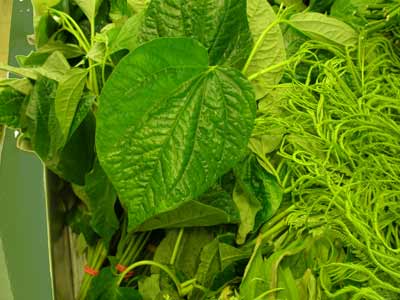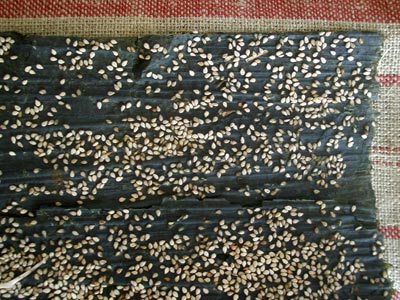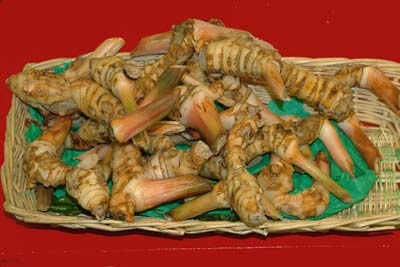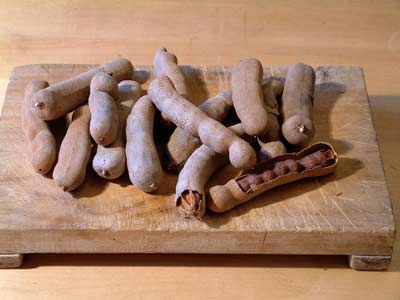
Betel leaf. The heart-shaped leaf of the betel pepper vine, used in cooking and for wrapping the ubiquitous pan or betel chew.

Dried sheets of edible Mekhong River algae, similar to nori. It is usually decorated with sesame seeds, garlic and tomato.

Galangale. The rhizome of a plant of the ginger family, although it is smaller and more shrivelled. It has more translucent, flesh-coloured skin than the rhizome of ginger. It is peeled and grated or thinly sliced and used in the same way that fresh ginger is used, but has a slightly more complex flavour reminiscent of camphor. Greater galangal resembles a cross between ginger and pepper; lesser galangal is more pungent, with cardamom and eucalyptus flavours, whilst kempferia is the strongest.

Tamarind. A sour-sweet fruit, sometimes known as the Indian date, used as a souring agent. It comes in long, dry brown pods which look almost like dried broad bean pods. Inside is a long, segmented fruit, like a long brown caterpillar. Each segment contains a hard, shiny black seed. As the pods dry the fruit becomes sweeter. A visitor from Mauritius suggested shaking the tamarind and, if you could hear that the fruit had detached and was rattling a little inside the pod, you would find that the fruit was sweet. All you need to do is to remove the pod and then chew the fruit, discarding the seeds. It is also available mashed and formed into a pulpy block or as a juice. In this form it is used like lemon juice.